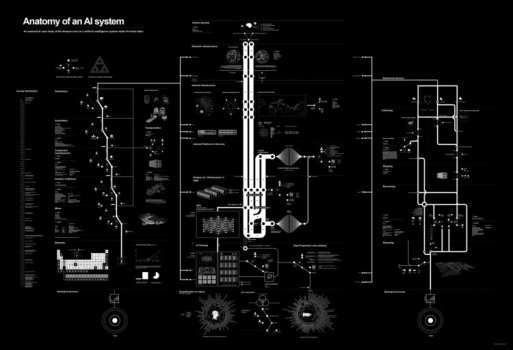Should designers care about artificial intelligence (AI) or machine learning (ML)? There is no question that technology is adding texture to the current zeitgeist. Never could I have imagined seeing a blockbuster hit where Ryan Reynolds emerges as a conscious non-player character in a video game and a flop where Melissa McCarthy negotiates humanity’s future with a James Corden-powered superintelligence within a year of each other. But does learning AI and ML’s ins and outs really matter for the creative professions and our nebulous, invaluable way of operating?
Helen Armstrong, a professor of graphic design at NC State, thinks so. In fact, for her it is imperative. “[AI] is everywhere and has already transformed our profession,” the preface to her new book reads. “To be honest, it’s going to steamroll right over us unless we jump aboard and start pulling the levers and steering the train in a human, ethical, and intentional direction.” The book is Big Data. Big Design. Why Designers Should Care about Artificial Intelligence and its gospel is a primer for designers of all cuts — landscape, graphic, industrial, or otherwise — to get oriented to a brave new world of human-machine relations.
When I say gospel, I do not mean it ironically. Armstrong’s prose is tinged with the passion of an evangelist trying to open our eyes to the great and terrible possibilities of AI-driven design practice. A book of this nature is sorely needed. As Brent Chamberlain and I argued last year in a Landscape Architecture Magazine article, the built environment professions are in the midst of an unprecedented technological transformation that is so overwhelmingly expansive yet so subtle it can be easy to ignore — even if for the mere sake of mental and emotional preservation.
We landscape architects need some particular stirring in this regard. The complexity and timescale of our working medium combined with a mostly healthy skepticism towards new technology for new technology’s sake can sometimes make it seem like the profession is perpetually playing catch-up. Big Data. Big Design. offers the catch-up without condescension, taking the generalist view that every design discipline needs to understand machine learning better regardless of pre-existing technical prowess.
The book’s structure is straightforward, with four main sections sandwiched by a preface and conclusion. The scale of discussion in these sections oscillates between broad definitions of what exactly AI and ML are (Armstrong uses the terms AI and ML interchangeably) and more specific examples of how they are used in design practice.
Continue reading: https://www.archdaily.com/987336/things-you-should-know-about-artificial-intelligence-and-design
Helen Armstrong, a professor of graphic design at NC State, thinks so. In fact, for her it is imperative. “[AI] is everywhere and has already transformed our profession,” the preface to her new book reads. “To be honest, it’s going to steamroll right over us unless we jump aboard and start pulling the levers and steering the train in a human, ethical, and intentional direction.” The book is Big Data. Big Design. Why Designers Should Care about Artificial Intelligence and its gospel is a primer for designers of all cuts — landscape, graphic, industrial, or otherwise — to get oriented to a brave new world of human-machine relations.
When I say gospel, I do not mean it ironically. Armstrong’s prose is tinged with the passion of an evangelist trying to open our eyes to the great and terrible possibilities of AI-driven design practice. A book of this nature is sorely needed. As Brent Chamberlain and I argued last year in a Landscape Architecture Magazine article, the built environment professions are in the midst of an unprecedented technological transformation that is so overwhelmingly expansive yet so subtle it can be easy to ignore — even if for the mere sake of mental and emotional preservation.
We landscape architects need some particular stirring in this regard. The complexity and timescale of our working medium combined with a mostly healthy skepticism towards new technology for new technology’s sake can sometimes make it seem like the profession is perpetually playing catch-up. Big Data. Big Design. offers the catch-up without condescension, taking the generalist view that every design discipline needs to understand machine learning better regardless of pre-existing technical prowess.
The book’s structure is straightforward, with four main sections sandwiched by a preface and conclusion. The scale of discussion in these sections oscillates between broad definitions of what exactly AI and ML are (Armstrong uses the terms AI and ML interchangeably) and more specific examples of how they are used in design practice.
Continue reading: https://www.archdaily.com/987336/things-you-should-know-about-artificial-intelligence-and-design

